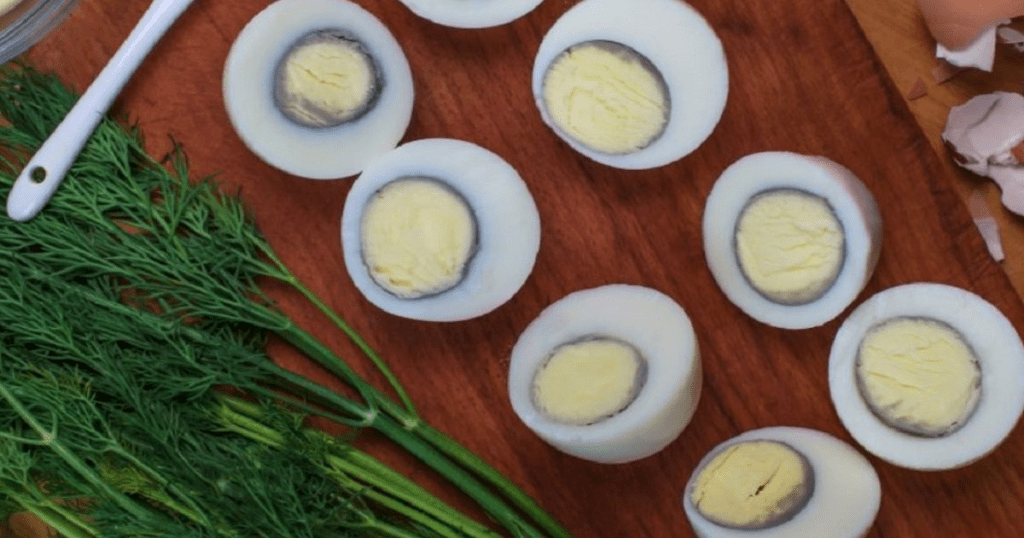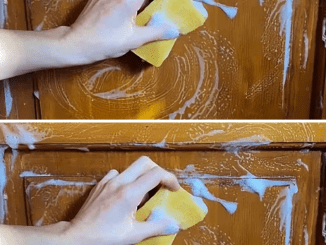As a seasoned SEO expert and high-end copywriter, I’ve had the privilege of crafting content that captivates audiences and elevates brands in the digital landscape. But today, I’m tackling a topic that’s a bit out of the ordinary – the intriguing phenomenon of green egg yolks.

Let’s face it, cracking open a hard-boiled egg only to find a vibrant, neon-green yolk can be a perplexing and somewhat unsettling experience. But fear not, my friends! In this article, we’re going to dive deep into the science behind this curious color transformation, explore the safety and culinary implications, and uncover the secrets to preventing those dreaded green yolks.
So, grab a carton of fresh eggs, and let’s embark on a journey to crack the code of the green yolk enigma.
The transformation of sunny yellow yolks into a rich, emerald hue is not as mysterious as it may seem. In fact, it all comes down to a simple chemical reaction that occurs during the cooking process.
When eggs are subjected to high temperatures, the sulfur compounds present in the egg white interact with the iron found in the yolk. This interaction creates a compound known as ferrous sulfide, which is responsible for the green coloration.
But don’t let the scientific jargon scare you off – the key takeaway is that this color change is a completely natural phenomenon, and it doesn’t mean your eggs have gone bad or are unsafe to eat.
Speaking of safety, one of the most common concerns people have about green-tinged yolks is whether they are still safe to consume. The good news is that the color change doesn’t indicate any sort of spoilage or toxicity.
In fact, the green yolks are just as nutritious and safe to eat as their sunny yellow counterparts. The color transformation is purely a cosmetic change, and it doesn’t affect the overall quality or flavor of the egg.
So, the next time you crack open an egg and find a vibrant, emerald-hued yolk, don’t fret – it’s perfectly fine to enjoy your breakfast as usual.
Of course, if you’re not a fan of the green yolk look, there are a few simple steps you can take to ensure your eggs retain their signature golden hue.
The key is to avoid overcooking and excessive heat during the cooking process. Gently simmering your eggs, rather than boiling them at a rapid pace, can help prevent the color change. Additionally, transferring the cooked eggs to an ice bath immediately after cooking will help halt the cooking process and minimize the risk of green yolks.
By mastering these egg-cooking techniques, you can rest assured that your hard-boiled eggs will always have that bright, sunny yolk that we all know and love.
Now, while the sight of a green-tinged yolk may initially be a bit off-putting, there’s no reason to let them go to waste. In fact, you can embrace the unexpected and find creative ways to incorporate these vibrant yolks into your culinary creations.

For instance, you can mash up the green yolks and spread them on a slice of avocado toast, adding a unique and visually striking twist to your breakfast. Or, you can use the green yolks to add a pop of color to deviled eggs, turning a classic dish into a delightful work of art.
The possibilities are endless, and by thinking outside the box, you can turn those unexpected green yolks into a delightful and Instagram-worthy culinary experience.
In the end, the appearance of green egg yolks may be unexpected, but it’s certainly not something to fear. By understanding the science behind this color transformation and mastering the art of egg-cooking, you can ensure your breakfast creations always have that perfect, sunny-yellow yolk.
However, don’t be afraid to embrace the unexpected and find creative ways to incorporate those vibrant, green-hued yolks into your culinary adventures. After all, the kitchen is a place for exploration, and who knows – you might just stumble upon a new and delightful way to enjoy the humble egg.
So, the next time you crack open an egg and find a neon-green yolk, take a deep breath, relax, and get ready to crack the code of this intriguing culinary mystery. Happy cooking, my friends!


